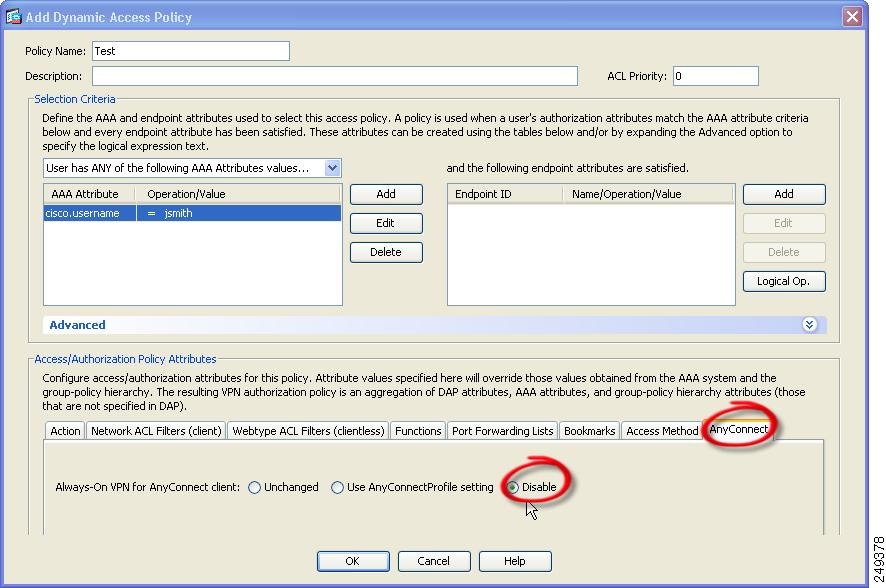NOTE: If you are using a university-owned device supported by OIT or your local IT staff, consult with them first before installing the VPN client.
MAC INSTRUCTIONS FOR VPN CONNECTION TO CAMPUS These instructions are intended for Faculty or Staff that need access to campus resources through the Virtual Private Network (VPN). If you have any questions or problems with instructions detailed here, please. Installation Instructions If you're installing for a Deakin-managed Mac, you simply need to search for Cisco AnyConnect in the Self Service application. First, please visit the Deakin Software Library and search for 'Cisco AnyConnect'. Otherwise you can use the Categories sidebar and navigate to Connectivity Tools Mobile Apps Cisco AnyConnect.
Cisco AnyConnect is the recommended VPN client for Mac. The built-in VPN client for Mac is another option but is more likely to suffer from disconnects. Overview Stanford's VPN allows you to connect to Stanford's network as if you were on campus, making access to restricted services possible. Mac OS Mojave (10.14) is compatible with AnyConnect 4.7.04056 and below For more details about the supported operating systems (Windows, Linux, Mac) of the Cisco AnyConnect Secure Mobility Client, refer to the article on Cisco AnyConnect Secure Mobility Client Supported Operating Systems and Requirements. ASU offers SSL VPN to all of its users. A user can download SSL VPN from myapps.asu.edu. Look for CISCO AnyConnect SSLVPN. Click on 'download app now'. Select windows if you are a windows user or mac if you are a mac user. Install the downloaded software. How to use SSL VPN? Open the “Cisco AnyConnect Secure Mobility Client”.
Advanced Instructions For Anyconnect Vpn For Mac Windows 10
Contents
Requirements
- Operating system: MacOS 10.13.0 or newer
NOTE: This software may work on older versions of macOS but is not officially supported by Cisco or NC State OIT. - Free hard disk space: 50 MB
- Minimum display resolution: 1024 by 640 pixels
- Administrator privileges: For installation
- Security and Privacy setting:
Allow apps downloaded from:
“App Store and Identified developers.”
For details, see Safely open apps on your Mac.
Installing the Software
- Download the installer file. For macOS 10.15 Catalina, download the updated Cisco AnyConnect 4.9 Client.
You may be asked to log in with your Unity ID and password before downloading. - Double-click on the anyconnect-macos-x.x.pkg file. (where x.x is a version number)
- In the Introduction window,
click on the Continue button (lower right). - In the Destination Select window,
choose the disk where you want to install the software (usually Macintosh HD).
Click on the Continue button (lower right). - In the Installation Type window,
click on the Install button (lower right). - In the next window, authorize the installation on your computer by entering:
- User name you use to log in to your computer (not your Unity ID).
- Your computer login password.
Then click on the Install Software button.
- In the Installation window,
a progress bar shows the status.
Installation may take a few minutes. - In the Summary window,
which shows the installation was successful,
click on the Close button.
Using VPN software: Connecting and Disconnecting
Locating the client
- In the macOS Finder menu,
select Go. - Open the Applications folder.
- Open the Cisco folder inside it.
- In the folder contents, locate
Cisco AnyConnect Secure Mobility Client.
Cisco Anyconnect Vpn Mac
Connecting to vpn.ncsu.edu
- In the Cisco folder, double-click on:
Cisco AnyConnect Secure Mobility Client - In the Ready to connect field, type:
vpn.ncsu.edu
if it does not already appear there. - Click on the Connect button.
- In the window that opens,
from the drop-down menu, select your Group:
1-Faculty-and-Staff: group for all employees.
2-Student: group for all students.
3-Student-Health-Center: specialized group for Student Health Center.
(Group assignment is manual.)
4-Vendor: specialized group for vendor access.
5-OIT-Staff: specialized group for OIT staff.
6-Faculty-and-Staff-FT: group for all employees with all connections in a full tunnel.
7-Student-FT: group for all students with all connections in a full tunnel. - Enter your Unity ID (username), Unitypassword and in the Second Password Field type either push, sms, or a passcode to authenticate.
- Click on the OK button.
- The Duo software will then either prompt for confirmation or send a passcode. To learn more about authentication with Duo see https://oit.ncsu.edu/it-security/2fa/.
- On the right side of the macOS menu bar,
a padlocked AnyConnect icon:
indicates a completed, secure connection to vpn.ncsu.edu. - A similar icon should appear in your dock.
Disconnecting the VPN session

When you finish using your VPN session, be sure to do the following:
Advanced Instructions For Anyconnect Vpn For Mac Catalina
- On the macOS menu bar,
click on the padlocked AnyConnect icon: - From the VPN menu that appears,
select Disconnect. - Disconnection is indicated by the absence of the padlock from the icon:

IT Services
VPN (Cisco AnyConnect) Instructions
The VPN (Cisco AnyConnect) software allows a secure connection from your device to UNC-Chapel Hill's network. It is used for students, faculty, staff who are accessing KFBS network drives (L:), for off-campus connections to Connect Carolina, and for improving performance on staff/faculty laptops.DUO two-factor service is required to use the VPN.INSTRUCTIONS
- Register for DUO for two-factor (if not already)
- Download Cisco AnyConnect VPN from UNC-Chapel Hill :
- Sign in with UNC-Chapel Hill Onyen username
- Use 'push' as verification option for convenience with DUO app for iPhone/Android
VPN Login Information
Cisco Anyconnect For Mac

- Server = vpn.unc.edu
- Click Connect
- Group = UNCCampus
- Username = Onyen username, Password = Your Onyen password
- Second Password = 'push' for DUO app, or 'sms' for text verification.
Anyconnect Vpn Client Software Download
Troubleshooting
Anyconnect Vpn Mac Download
- If connection drops - Restart your Windows PC or Mac
- Physically move closer to wireless router